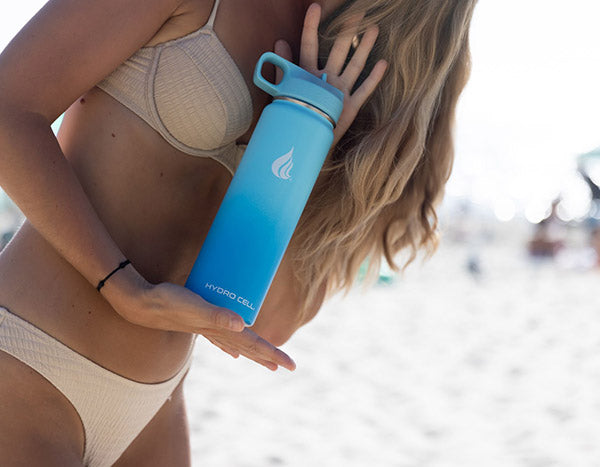7 Reasons Plastic Bottles are Dangerous for Your Health and Environment

Everyone knows the importance of water for our environment and bodies. Without water, our body cannot survive and can cause several problems like constipation, which is the mother of all diseases.
To consume water, it is very obvious that you need a water bottle, but we all know that nowadays, many water bottles are made up of plastic and other harmful materials.
Hence, most people wonder what the greatest risk of drinking water from plastic bottles might be.
Top reasons plastic bottles are dangerous for your health and environment
There are many ways in which plastic can be harmful to your body and to the environment that you are living in. Plastic is a non-degradable and very harmful material for species living on land or ocean.
Meanwhile, some people do not know much about the ways or reasons plastic is considered dangerous.
1. It has the potential to release harmful substances into your water
When you are exposed to water bottles made out of plastic, they are simultaneously exposed to heat. Other environmental factors can be a major cause of why harmful chemicals might be drinking your water.
The ultraviolet rays from the sun or the microwaves can break down the layers of plastic on their outer side. As a result, plastic bottles can release a chemical called bisphenol, also called BPA.
These chemicals are also found in the tin or other metals that are the main cause of contaminating the liquid you might drink from your bottle. When you ingest these chemicals, they can mimic the hormone named estrogen. That can change the working of your endocrine system resulting in different diseases like diabetes, asthma or even cancer.
2. Plastics might be one of the reasons for a higher rate of infertility
Many researchers have found that men and women that are undergoing the in vitro methods of fertilization tend to have high levels of BBA in their blood system.
As mentioned earlier that exposing your plastic water bottles to extreme heat can result in the release of a harmful chemical that is named BPA. It can create quite higher complications in women that stop them from conceiving. Even if a woman conceives, the chances of miscarriage are quite higher.
3. Plastic chemicals have the risk of increasing chronic diseases.
It is known that humans exposed to high levels of BPA have much higher chances of developing chronic diseases in their early life. However, it is not proven that plastic chemicals are one of the main reasons for heart problems. It might be among many other reasons are factors. Many researchers have shown that people who drink from tin cans have high BPA levels in their blood, which can cause hypertension.
4. Plastic bottles that are refilled can expose humans to harmful bacteria
Glass and steel bottles are not like plastic; they are reusable and can be disposed of easily. But plastic bottles tend to break down after one or two use. Therefore, plastic bottles accommodate the growth of bacteria that can harm the human body.
Meanwhile, the majority of bacteria are harmless. Plastic bottles can often harbor bacteria that cause cold flu and high fever in humans. Therefore, for such reasons, it is advised not to drink water from bottles that are manufactured from plastic.
5. They are harmful to the environment.
Certainly, most of the plastic we use is recyclable, but most are not. Plastic is a material that does not degrade easily and takes several years to break down, even if buried under the soil. This plastic can then enter potions and affect the species which are living underwater. It can enter their living system, cause breathing difficulty and ultimately cause death.
6. Plastic water bottles that can be disposed of are expensive
Another reason you should not drink water from plastic water bottles is that they are often overpriced as compared to other material water bottles. This is because they can be disposed of very easily as compared to other bottles like metal or glass.
Hence the producers make their prices quite high due to this characteristic of the plastic water bottles. You might not need to spend a hefty amount of money on a bottle that is not only expensive but can be harmful to you and the environment you are living in.
7. If you refill your plastic water bottle with tap water, it can release carcinogens.
The majority of drinking water systems across the United States of America have proven to contain carcinogens such as hexavalent chromium and other nitrates. Carcinogens are those compounds that can cause cancer within a human body or any other living Organism. Hence to keep you safe from such risk factors, you should stop drinking water bottles that are made from plastic.

The best alternative for plastic water bottle
The best alternative for a plastic water bottle is stainless steel water bottles. They are not only durable and reusable but also environmentally friendly because they are easy to recycle. Hydro Cell wide mouth stainless steel water bottles are the best product available in the market because they come with the following features.
- Available in a variety of sizes so you can pick the one you need.
- It comes in single-tone and double-tone colors, so you can pick the one that meets your style.
- Hydro Cell stainless steel water bottles come with straw caps and standard caps that make it easier to drink water while you are on the go.
- They have a special insulation that will keep your water or other drinks warm or cold/
Hydro Cell water bottles will keep you hydrated while helping you save money in the long run. Once you invest in a stainless steel water bottle, you can rest assured that you will not have to worry about any harmful microparticles or other chemicals because they are manufactured with food-grade stainless steel.
Conclusion
To save your money and the environment or your health, you should Drinkwater from bottles that are made from steel. They are cheap, easy to carry around and protect your water from Harmful environmental factors.



